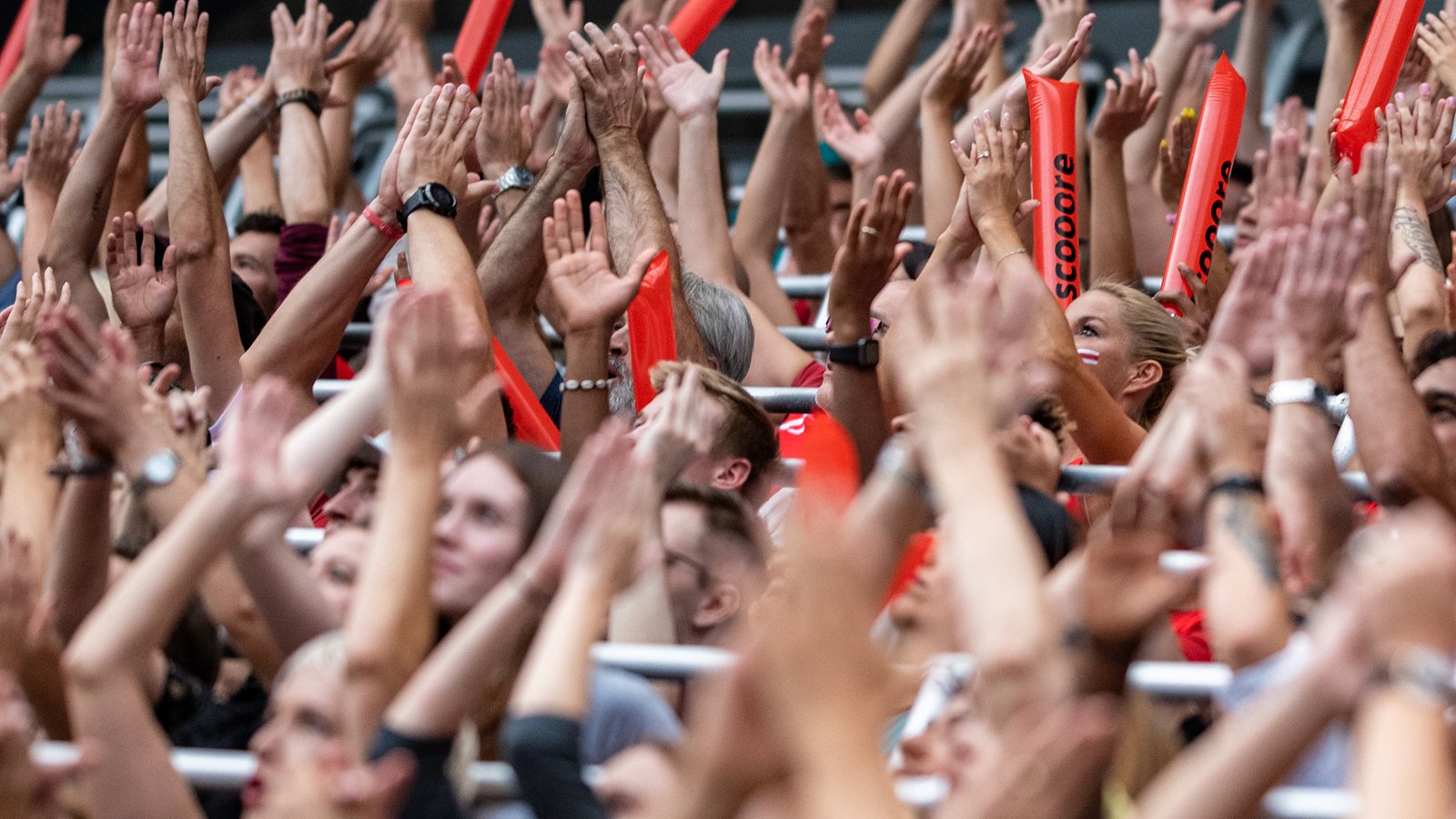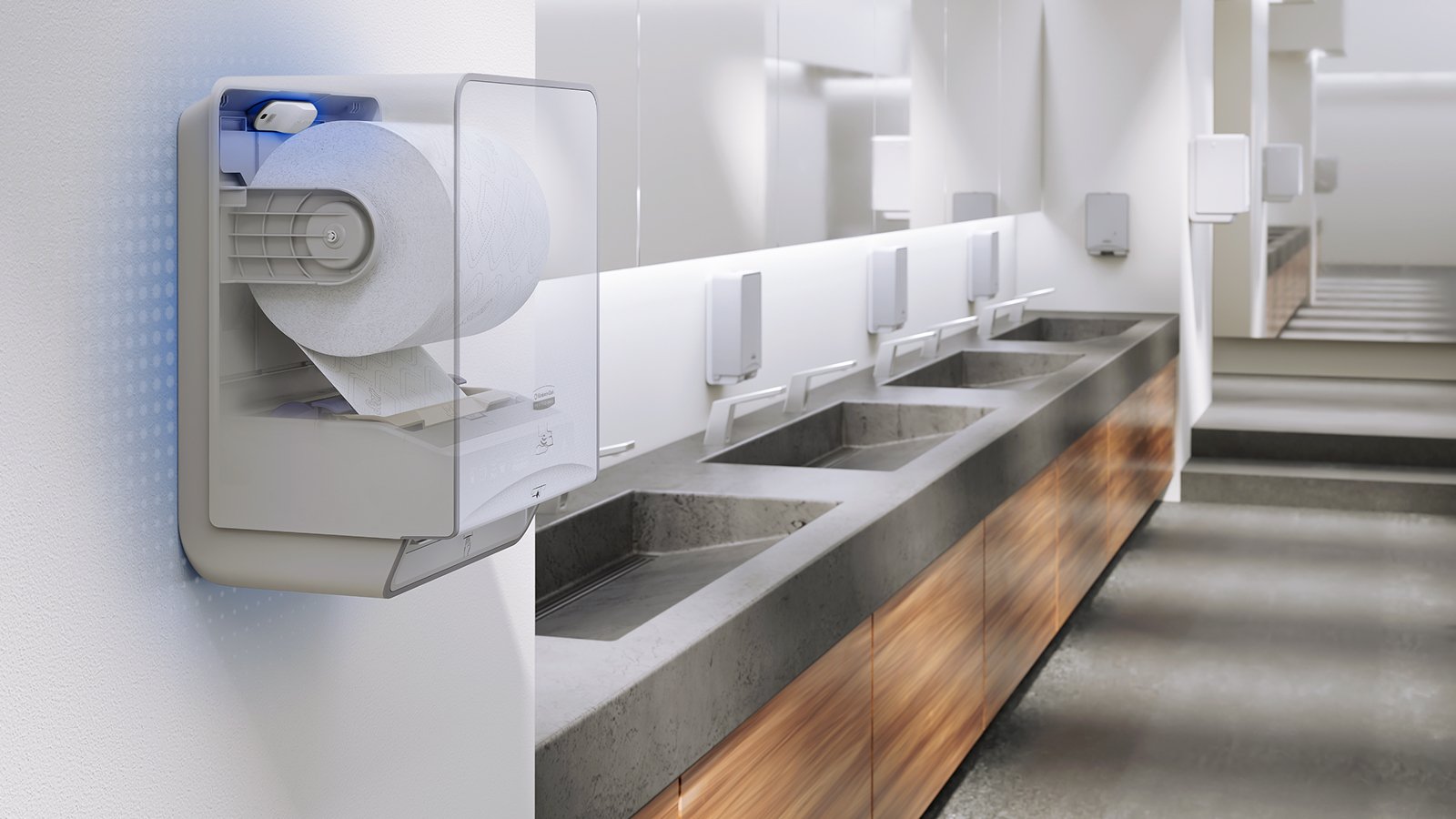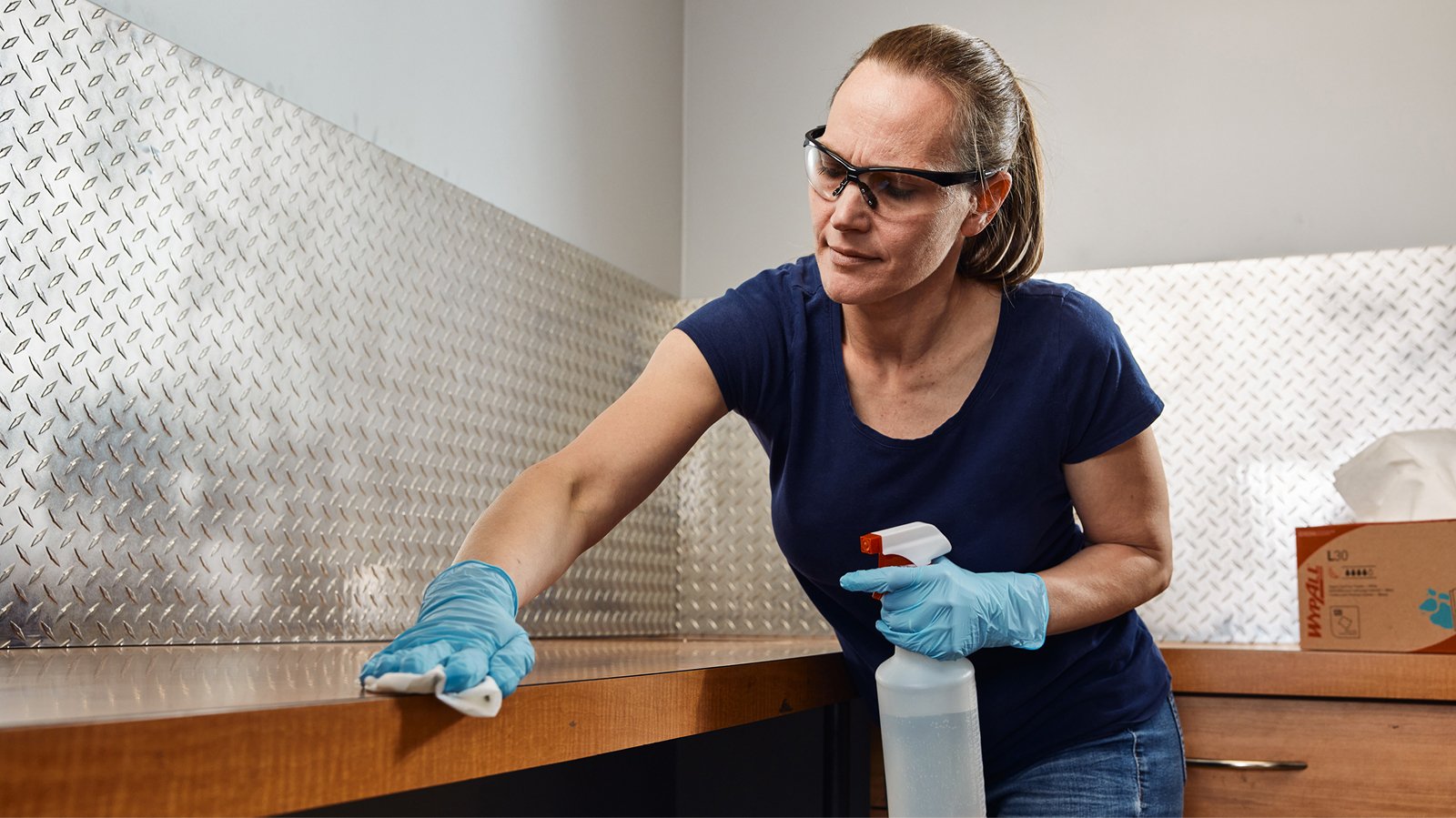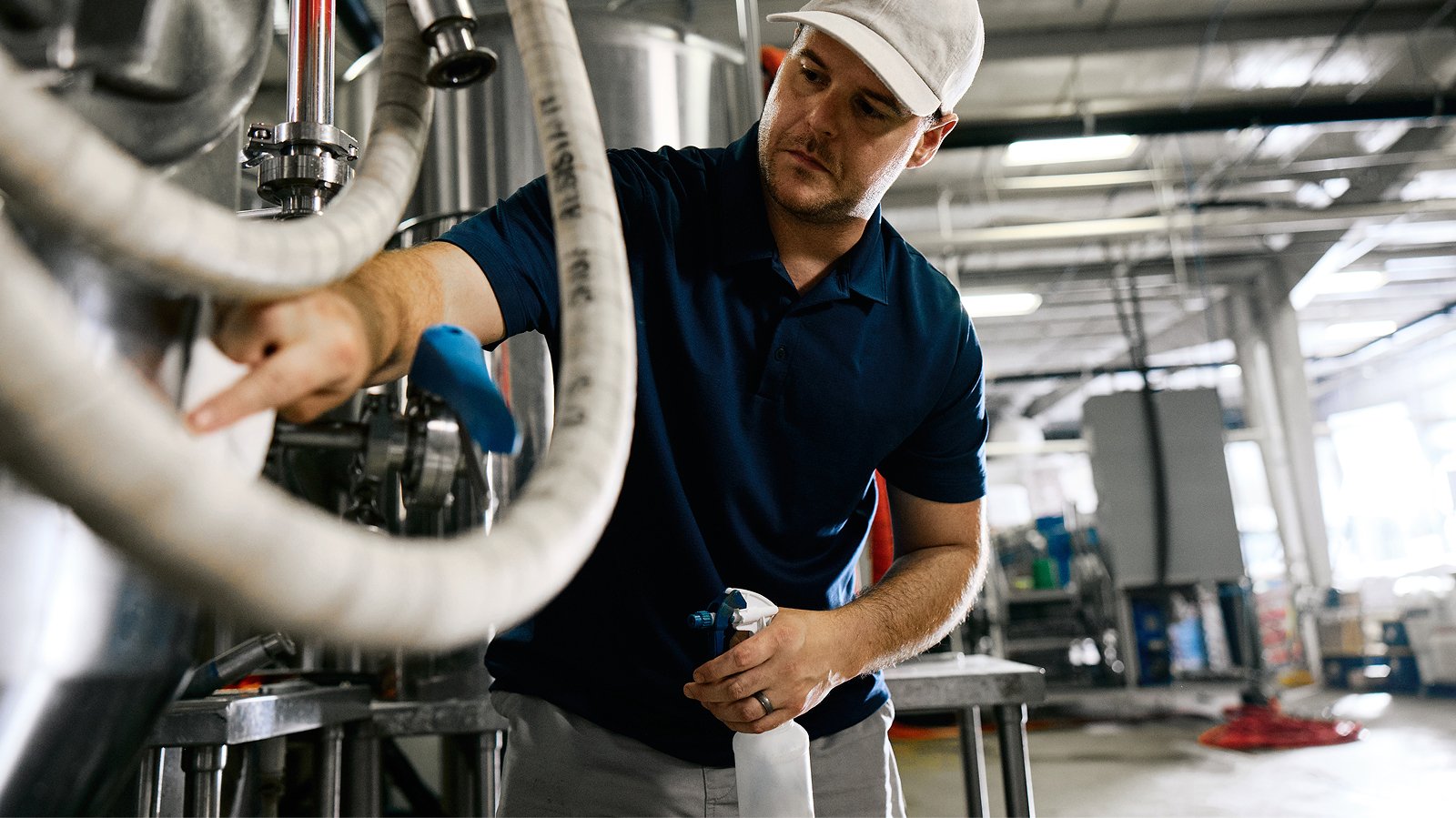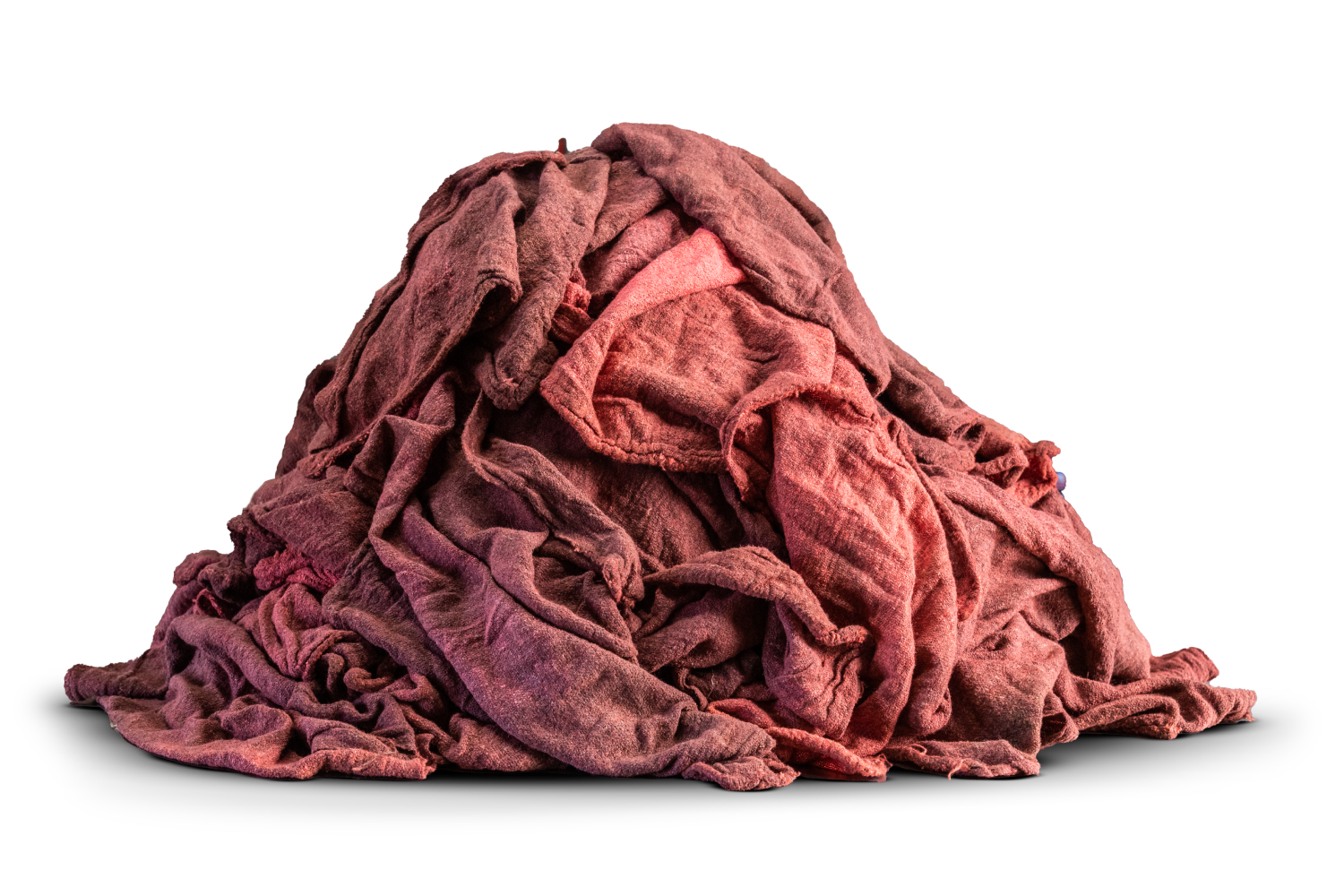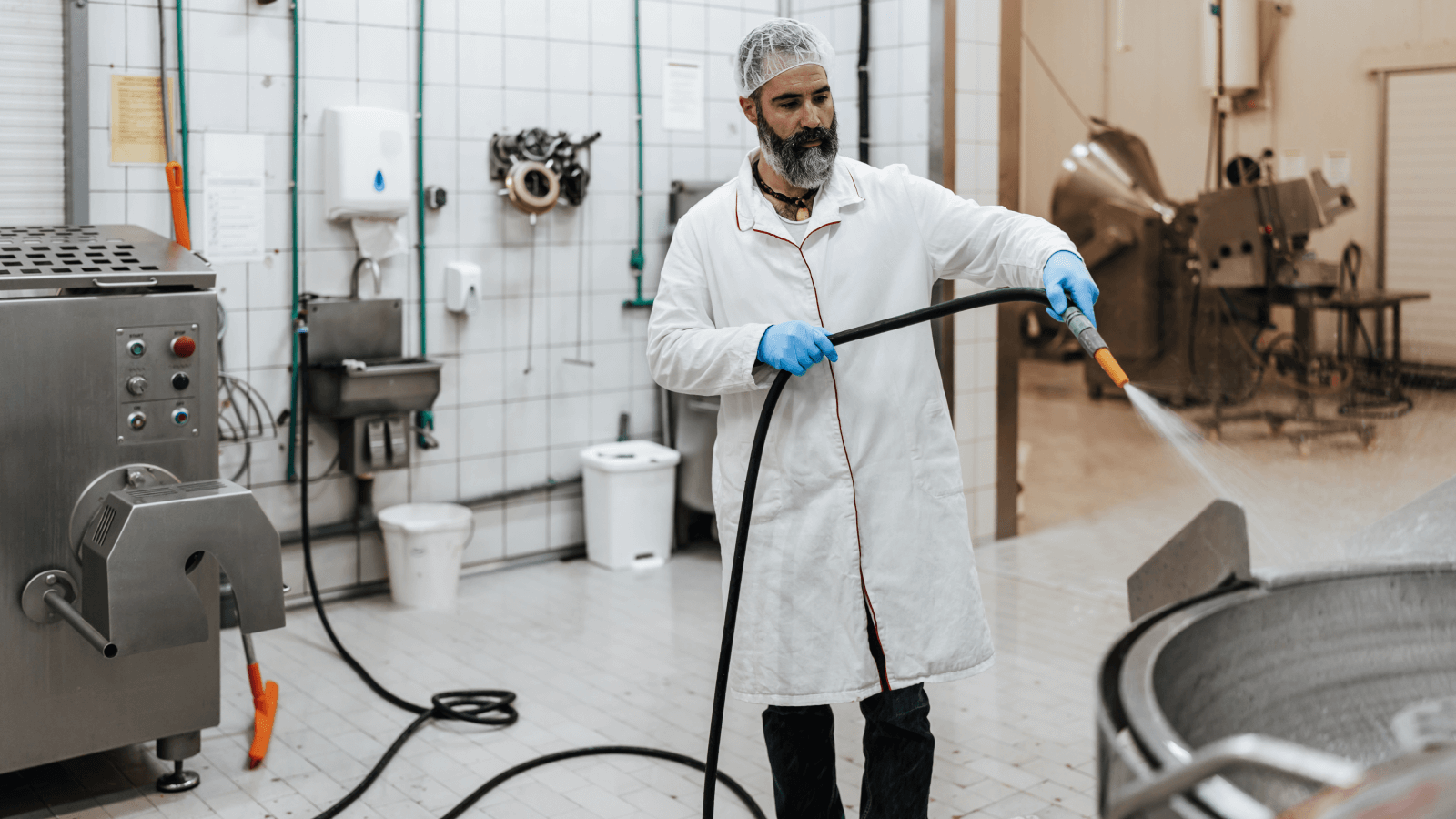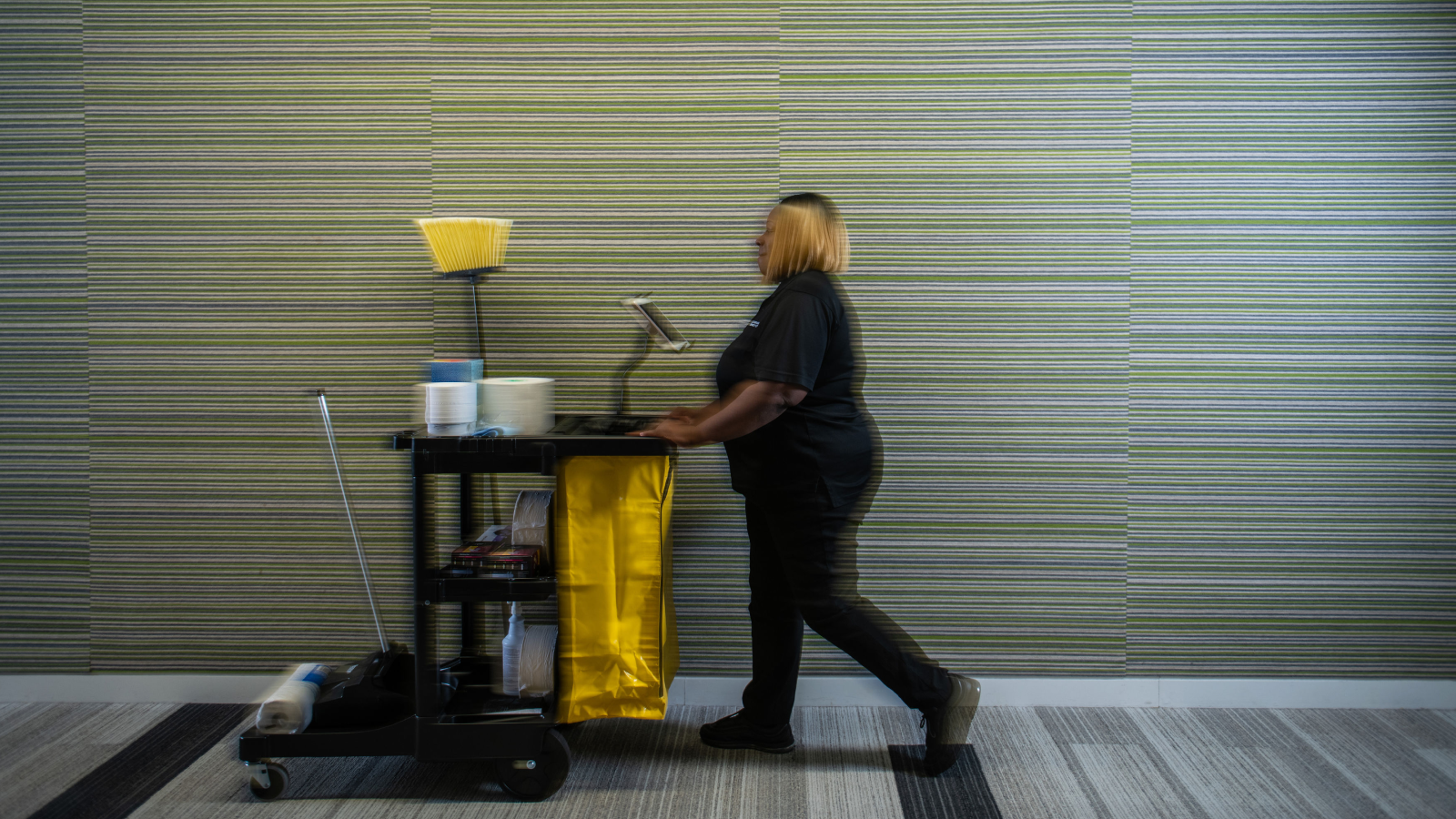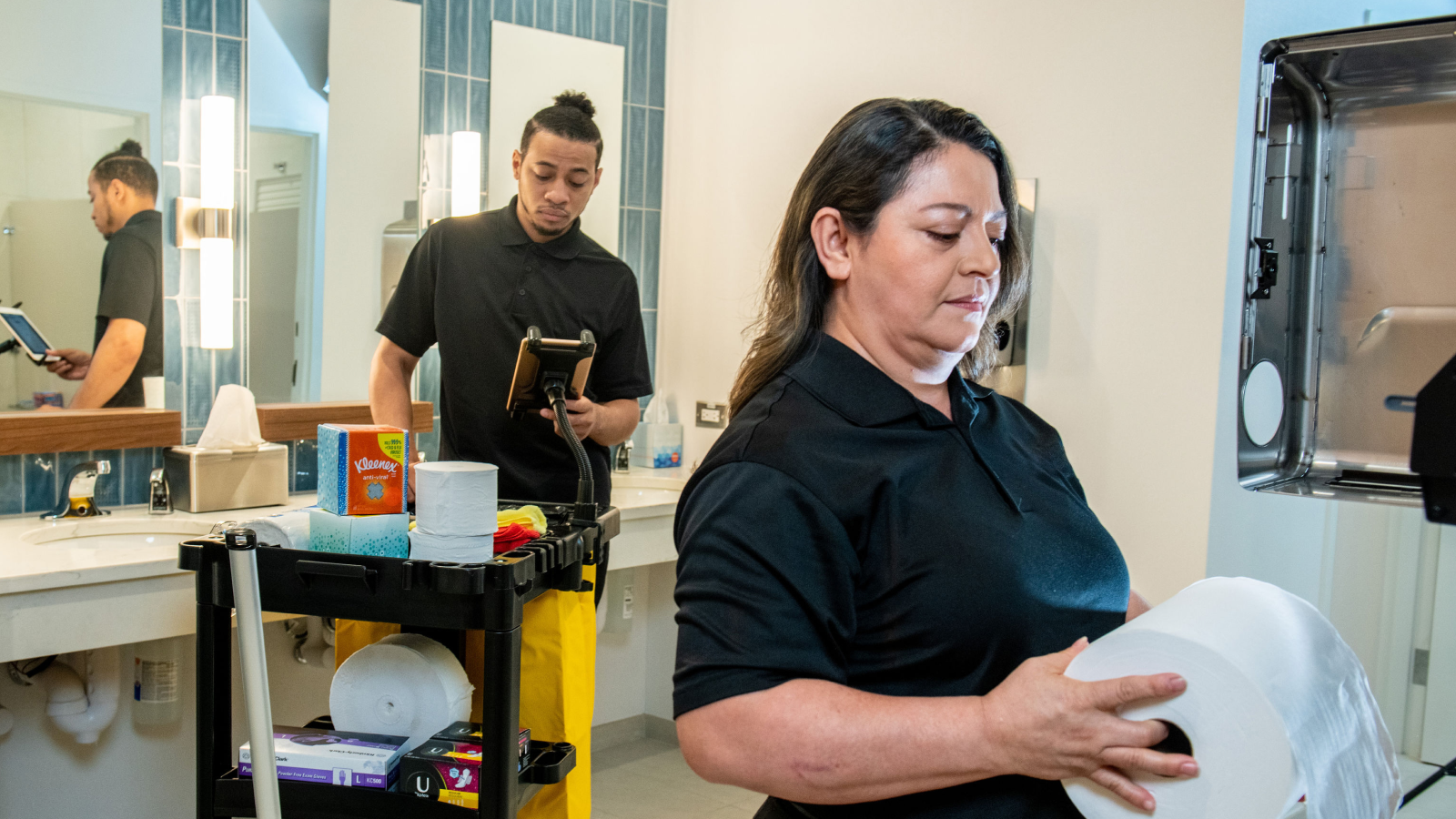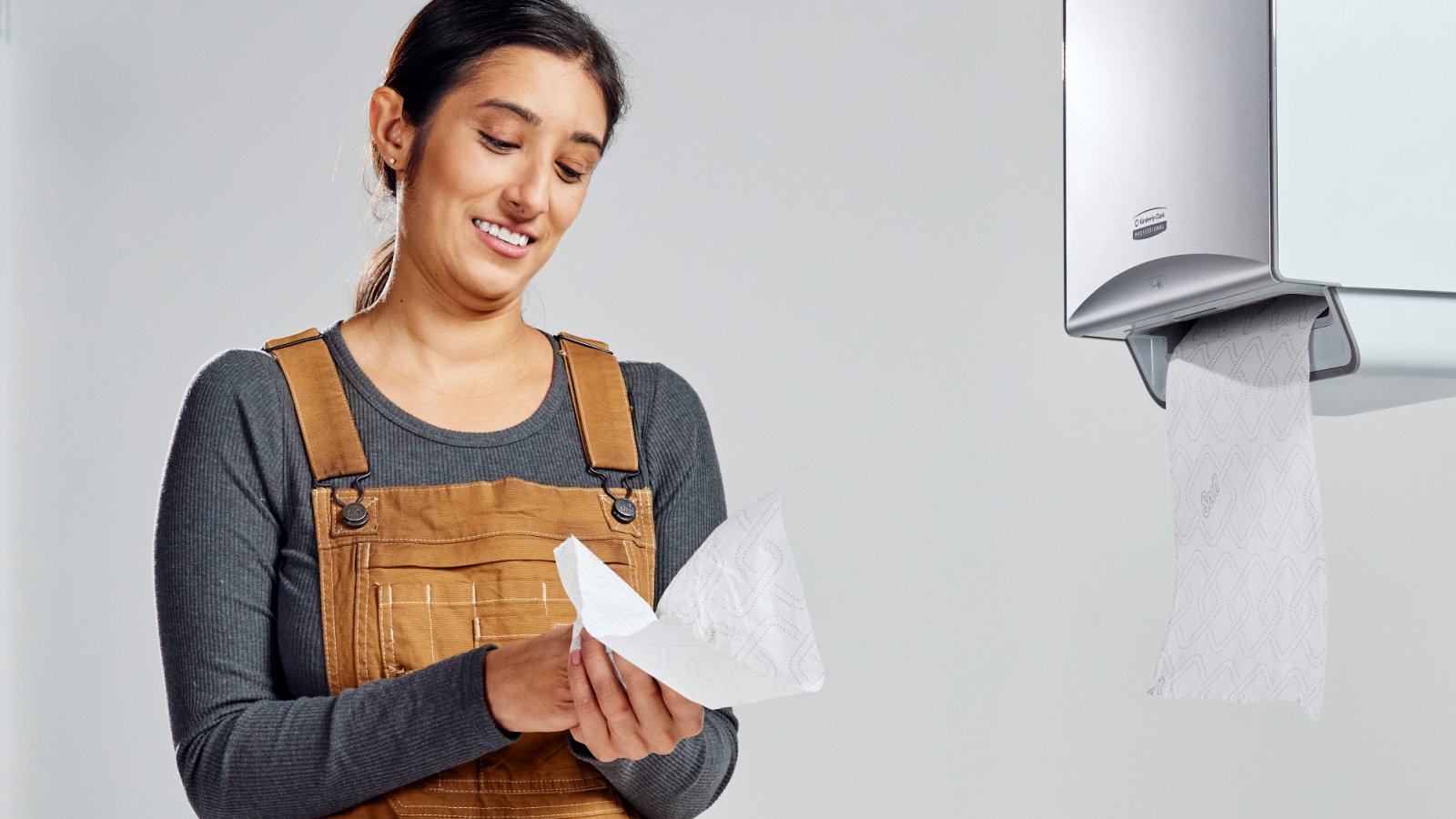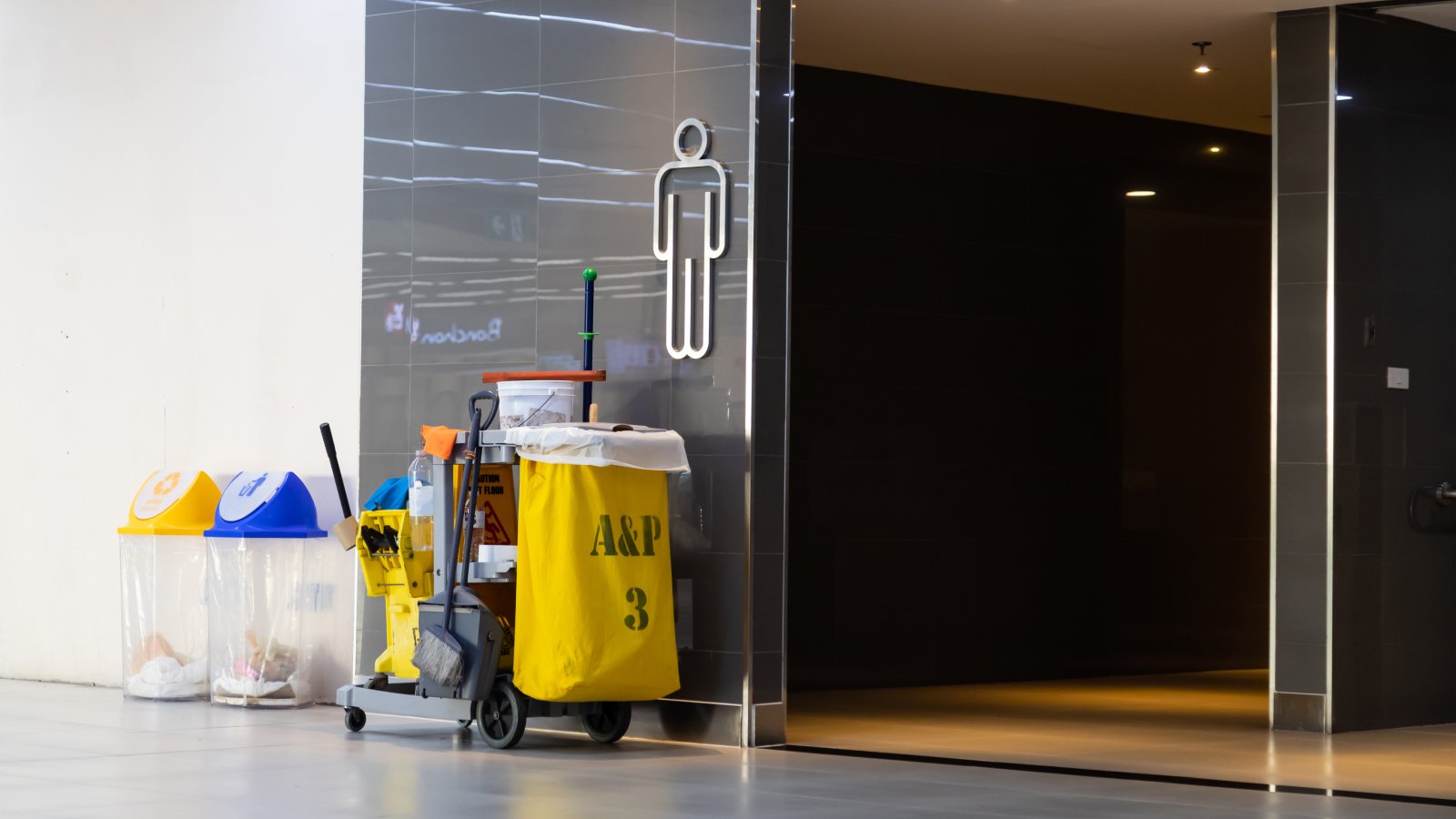Last Updated APRIL 2025
Maximizing Efficiency: How Smart Restroom Technology Reduces Costs in High-Traffic Venues
“We need to do more with less” is a refrain high-traffic venue Facility Managers know all too well. With increasing staffing challenges, rising supply costs and higher customer expectations, the call for increased restroom efficiency and cost reduction in maintenance operations is greater than ever. To increase productivity and grow customer satisfaction, facilities teams need to reinvent processes and move past traditional fixed cleaning schedules.

Customers notice your work
The impact of restroom maintenance on customer perceptions of a facility is undeniable. A recent study underscored this with 83% of survey respondents saying that they believed that a restroom’s condition showed how much a company cares about employees and guests.1
As you might expect, what happens in the restroom doesn’t stay in the restroom: The study also found that 74% believed that if a restroom is not clean, they don’t think that the rest of the facility is clean either.
Some of the top cues that customers look for when deciding if a high-traffic location is hygienic include employees actively cleaning, trash being disposed of properly and the staff using disinfecting wipes on surfaces—all of which require staffing and resources.
Rethinking restroom maintenance
When you combine customer expectations of impeccable restrooms with the operational reality of tighter budgets and limited staff, it’s clear that Facility Managers face a significant challenge, whether they are managing a casino, airport, stadium, school or hospital.
Addressing these needs with a traditional approach means accepting either the unsustainable option of higher labor costs or the unacceptable choice of increasing customer dissatisfaction. So how can forward-thinking Facility Managers address this problem? By working smarter using technology-enabled management.

Moving from reactive to proactive
Negative feedback plays too large of a role in conventional restroom management—clean, refill, get complaints, respond and repeat. This results in an inefficient allocation of resources and an inconsistent customer experience.
Smart restroom IoT solutions move maintenance work from a reactive cycle to proactive management. Using IoT sensors, data analytics and automated alerts, facility teams can evolve from fixed schedules to dynamic, needs-based service delivery—and significantly reduce costs.
The benefits are transformative:
- Real-time awareness: See restroom conditions and usage patterns immediately
- Predictive planning: Plan servicing based on anticipated peak usage times
- Resource optimization: Break free from rigid schedules and direct staff to where they’re needed most at any moment
- Reduced waste: Help prevent the premature removal of paper rolls and soap cassettes
- Performance validation: Simplify service completion and compliance documentation
- Continuous improvement: Refine processes and resource allocation using historical data

The optimal solution: a single integrated ecosystem
For high-traffic facility teams to get the most value from smart restroom technology, a coordinated and comprehensive solution is required. Relying on standalone smart devices from different vendors prevents facilities from realizing the full benefits of modern restroom management. Dealing with multiple backend systems is complicated and creates data silos that can cause facilities to miss actionable insights. The most efficient solution is the holistic approach of an integrated ecosystem.
Onvation®: designed for high-traffic venues
Onvation from Kimberly-Clark Professional is a comprehensive smart restroom solution for high-traffic facilities that integrates hardware, software and services into a single seamless platform.
Onvation provides visibility across all restrooms and simplified management through a single interface. This supplies Facility Managers with a single source of truth for analysis and strategic planning. With real-time data on customer traffic, product usage, supply levels and cleaning events in a single database, Facility Managers have an unprecedented ability to optimize operations, deliver better customer experiences and reduce labor and material costs.

Tracking facilities in real time
The Onvation system takes a continual pulse of key restroom condition indicators:
- Visitor traffic and occupancy patterns
- Consumable supply levels (paper towels, toilet paper and soap)
- Fixture status and maintenance needs
Onvation SmartFit™ sensors are wireless, require no external power supply and provide reliable operation around the clock. Installation can be done easily with minimal disruption to ongoing operations.
Save on every refill
The cloud-based Onvation platform monitors product usage in real-time to predict when a dispenser will need to be refilled and sends an alert for staff to perform proactive restocking at the optimal time. This provides cost savings in at least three ways:
- Helps prevent costs related to resolving empty dispenser complaints
- Helps eliminate premature restocking product waste
- Ensures that staff are deployed where and when they can provide the greatest value
Optimize labor scheduling, reduce turnover
To help ensure that restrooms are always clean and well-maintained, Onvation tracks restroom traffic patterns to predict peak usage times. This allows Facility Managers to optimize staff scheduling and labor expenditures. In addition to matching labor resources with needs, it helps prevent the stress that occurs when a shift is understaffed, and team members feel overworked. This can also help reduce employee turnover and the significant costs of continually recruiting and onboarding new staff members.
Help prevent costly service disruptions
The system can also detect dispenser issues before they escalate by identifying devices that are malfunctioning or running low on battery power. With this early warning, facilities can address problems proactively, minimizing both downtime and repair expenditures as well as reducing the risks of costly complaints.

An app to help cleaning teams succeed
In addition to the insights provided to managers via the dashboard, Onvation supplies digital tools to help cleaning teams work more efficiently. Available in six languages, the easy-to-use Onvation Compass® app delivers immediate service alerts and enables team members to record service completion information that feeds directly into the Onvation dashboard. Refill alerts on the app also include links to videos showing how to service the specific device in need of care. With high turnover rates being a significant issue across the industry, these videos help new employees get up to speed faster.
See how high-traffic venues saved
To demonstrate how Onvation smart restroom management can help high-traffic venues save, we examined four months of restroom data from 10 Onvation customers, covering a range of locations, market segments and building sizes. Data was collected for one month prior to the deployment of Onvation as a baseline and then for 90 days after the system was in use.
Customers saw savings for all of the primary restroom expenditures:
- Preventing supply waste: Before Onvation implementation, these facilities were spending on average $43,592 annually on towels, soap and tissue, with $20,488 of that wasted due to premature refills. After Onvation was put in place, early refills were reduced and their annual spend was lowered to $30,950.
- Reduced labor costs: Prior to Onvation, the surveyed facilities were spending $93,041 for two cleaners to perform three top-to-bottom cleaning rounds, checking each dispenser on each visit.2 With Onvation running, they were able to eliminate one cleaning round per day and reduce labor costs to $62,028.
- Less spent responding to complaints: These facilities received an average of four restroom-related complaints per day before Onvation. With 261 working days and an estimated cost of $31 for each complaint,3 that adds up to $32,364 per year. Once Onvation was implemented, they were able to reduce restroom complaints by up to 75% to one per day, bringing the annual cost of complaint response down to $8,091.
Putting all these savings together, these facilities reduced costs by an average of $68,052 annually and were able to redeploy teams to perform deep cleaning and disinfection procedures that might not have been done otherwise, helping reinforce a positive customer impression of facility cleanliness.
See how a smart restroom can help you reduce costs
Visit the Onvation homepage to learn more about how it can help your facility.
1 Kimberly-Clark Professional, Hygiene Behaviors Consumer Study, May 2020
2 Assuming 2 cleaners at an average hourly rate per cleaning round per working day; 40-restroom building with 8 dispensers per restroom.
3 $31 per complaint, ISSA Value of Clean White Paper, 2012










